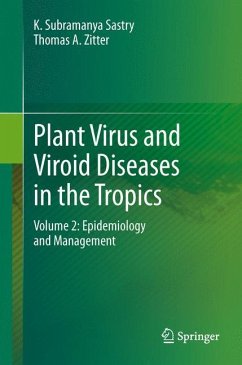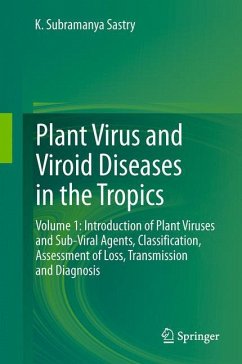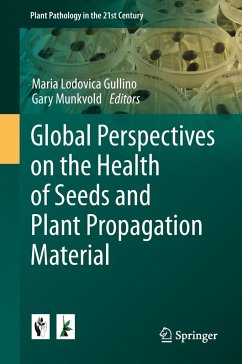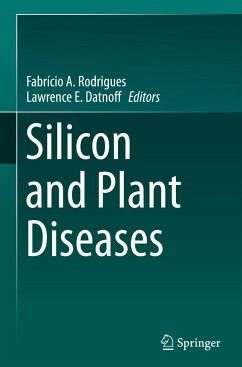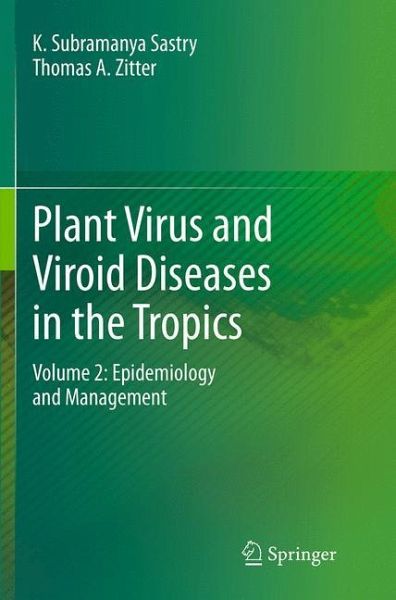
Plant Virus and Viroid Diseases in the Tropics
Volume 2: Epidemiology and Management
Versandkostenfrei!
Versandfertig in 6-10 Tagen
151,99 €
inkl. MwSt.
Weitere Ausgaben:

PAYBACK Punkte
76 °P sammeln!
Around the globe, besides fungal and bacterial diseases, both virus and viroid diseases have acquired greater importance in the realm of plant pathology and call for effective management measures as they are responsible for heavy yield losses and are a matter of vital importance and concern to farmers, horticulturists, gardeners and foresters. Understanding disease epidemiology is of vital importance for formulating viable disease management practices in a given agro-ecosystem. The development and progress of plant disease epidemics are variable from region to region. Epidemiology is not a sta...
Around the globe, besides fungal and bacterial diseases, both virus and viroid diseases have acquired greater importance in the realm of plant pathology and call for effective management measures as they are responsible for heavy yield losses and are a matter of vital importance and concern to farmers, horticulturists, gardeners and foresters. Understanding disease epidemiology is of vital importance for formulating viable disease management practices in a given agro-ecosystem. The development and progress of plant disease epidemics are variable from region to region. Epidemiology is not a static process, but rather a dynamic course that varies with a change in the ecology, host, vector and virus systems.




